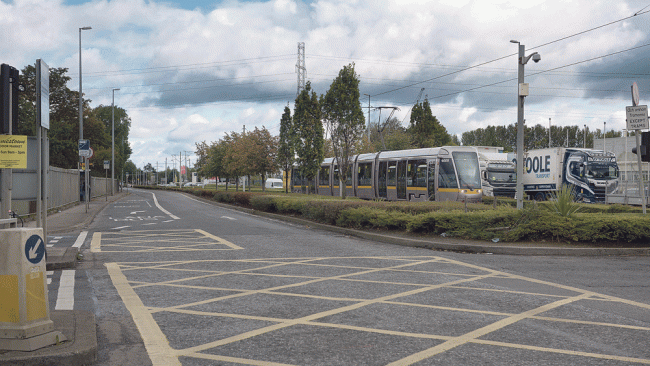
Mixed response to City Edge project
A COLLABORATIVE regeneration project in the Naas Road, Ballymount and Park West areas by Dublin City Council and South Dublin County Council could see a development with a population the size of Galway “within a stone’s throw of the city centre”, according to a planning and transport director.
As previously reported in The Echo, the City Edge development is set to become one of Europe’s largest regeneration projects, with the future potential to accommodate up to 75,000 jobs and 40,000 homes.
The project focuses on 700 hectares of land in the Naas Road, Ballymount and Park West areas, on the western edge of Dublin city centre.
Last week, Minister for Housing, Local Government and Heritage, Daragh O’Brien TD, opened the City Edge International Conference, which members of the public took part in.
It was part of the wider public consultation process for the project, which ended this week, and the feedback on the project so far has been mixed.
Mick Mulhern, City Edge steering committee member and director of planning and transport at South Dublin County Council, told The Echo: “We’ve had a mixed response from Dubliners in general.
“People are saying it’s a fantastic opportunity, but there’s questions about how deliverable it’ll be.

The Luas line heading towards Bluebell and Inchicore
“We’ll need a new Luas line, a new train station, a new north-to-south public transport corridor, and new flagships parks.
“There are a lot of big things that we’ll need, and the question we get is, is it deliverable and is it feasible?
“We’re at the vision-setting stage – this is a non-statutory stage. What we’re saying is, let’s imagine a new part of Dublin, what do we need to do to make it a really successful place?
“We’re looking at what we’ll need to deliver it. Now we’re setting the vision, defining what we need and figuring out how to pay for it and how to get State agencies to deliver it.”
The area will also form part of a national strategy to regenerate Dublin City, and is already a cornerstone of the Dublin economy with some 1,500 businesses employing 25,000 people, alongside well-established residential communities of 5,000 people.
The project will focus on the development of the area over the next 30 years or so, with an emphasis on maximising its potential as an area for both residential and employment uses.
“There’s potential for the development of 40,000 homes,” explained Mr Mulhern, “which would be the equivalent of Galway within a stone’s throw of the city centre.”
When asked why now is considered the right time for the plans to be developed, Mr Mulhern said the backdrop of the housing crisis and an increased need for developments of this nature in Dublin were key factors.
“Dublin’s got to house 300,000 people by 2040, and that will have to be on brownfield sites like the one we’re talking about now,” he said.
“There’s not a million places like this in Dublin. We’ve got a housing crisis, and we’ve got to house a lot of people.
“It will take time to get a project like this going, so we want to get it started now.”
The project is currently in the non-statutory phase, however it is expected to progress to the statutory phase next year as the plans are still at a very early stage, according to Mr Mulhern.
For more information on City Edge, visit cityedge.ie

